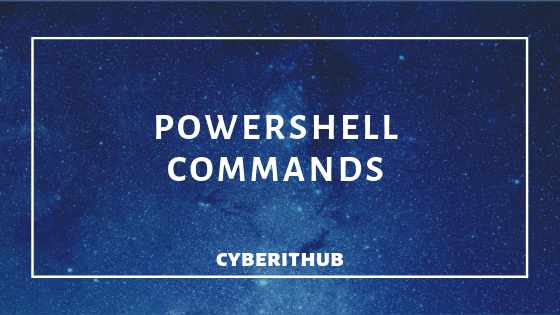Table of Contents
PowerShell language is a high-level proprietary programming syntax developed by Microsoft for the key purpose of enabling system administrators to automate actions and configurations.
The language is based on object-oriented standards but can only be used in Windows environments.
It is part of the .NET framework and typically has C# code underlying its functions, although knowledge of C# is not a prerequisite for learning PowerShell. The closest comparison to the PowerShell language is Perl, which is used in similar scenarios on Linux environments.

With the PowerShell language, each unique function is referred to as a cmdlet. A cmdlet has one or more sets of defined actions and is capable of returning a .NET object.
Some of the most basic cmdlets that come pre-configured with PowerShell are ones for navigating through a folder structure and moving or copying files.
Powershell Commands:-
1.Mention what is the command that can be used to get all child folders in a specific folder?
Ans.To get all child folders in a specific folder, you have to use parameter recurse in the code.
C:\>Get-ChildItem C:Scripts –recurse
2.Explain how you can convert the object into HTML?
Ans.To convert the object into HTML
C:\>Get-Process l Sort-object – property CPU –descending l convert to – HTML l Out-file “process.html”
3.What is the code to find the name of the installed application on the current computer?
Ans.Below is the command to find the name of the installed application:-
C:\>Get-WmiObject-Class Win32_Product- ComputerName . l Format-wide-column1
4.Explain how you can find in PowerShell that all the sql services are on one server?
Ans.There are two ways to do this:-
C:\>get-wmiobject win32_service l where-object {$_name-like “*sql*”}
C:\>get-service sql*
5.How to find top 100 processes that are consuming memory more than 100MB and export the list of processes to a CSV file?
Ans. Powershell 2.0
C:\>Get-Process | where-object { $_.pm -gt 100MB }| select -First 100 | Sort pm -Descending
Powershell 3.0
C:\>Get-Process | where pm -gt 100MB | select -First 100 | Sort pm -Descending c:\>Get-Process | where pm -gt 100MB | select -First 100 | Sort pm -Descending | Export-Csv C:TempProcess-100MB-Memmory.csv c:\>gci C:TempProcess-100MB-Memmory.csv
6.How to read all log files for “ERROR” and print that lines that matches?
Ans.Below is the command to read all log files:-
C:\>gci “$env:tempCitrixLogs” -File | foreach { Get-Content “$env:tempCitrixLogs$” | foreach { if ($ -match “Error”) {$_} } }
7.How to find all latest events that have “entered the stopped state” in System log within past 24 hours?
Ans.Below is the command to find all latest events:-
C:\>Get-EventLog -LogName System -Message “entered the stopped state” -After $(Get-Date).AddHours(-24) -Newest 5
8.How do you measure the time taken for execution of a PowerShell command?
Ans.Below is the command to measure the time taken for execution:-
C:\> Measure-Command { Get-WmiObject -Class win32_service | where-object { ($.StartMode -eq “Manual”) -and ($.State -eq “Running”) } } | select TotalSeconds | ft -a
C:\>Measure-Command { Get-WmiObject -Class win32_service -Filter “StartMode=’Manual’ and State=’Running'” } | Select TotalSeconds | ft -a
C:\>Measure-Command { Get-WmiObject -Class win32_service -Filter “StartMode=’Manual’ and State=’Running'” } | Select TotalSeconds | ft -a
9.How to send a file as an attachment to an email recipient?
Ans.Below is the command to send a file as an attachment:-
C:\>Send-MailMessage -To myemail@gmail.com -From Dummy@gmail.com -Subject “System Events File is in Attachment” -Attachments “c:tempsysevents.csv” –SmtpServer smtpsrv1.google.com
10.How do you find all services that are set to run “Manual” and not running.
Ans.Below is the command to find all services:-
C:\>Get-WmiObject -Class win32_service -Filter “StartMode=’Manual’ and State!=’Running'” | Select-Object -First 5 | ft -a
11.How do you find the free space of C: drive in GBs?
Ans.Below is the command to find the free space:-
C:> Get-PSDrive –Name C | ForEach-Object {[math]::round($.free/1GB)}
12.How to execute SQL query in PowerShell?
Ans.Below is the command to execute SQL query:-
C:\>Invoke-Sqlcmd -Query "SELECT GETDATE() AS TimeOfQuery;" -ServerInstance "MyComputer\MyInstance"
13.How to delete files older than 30 days in c:\temp?
Ans.Below is the command to delete files older than 30 days:-
$Path = "C:\temp"
$Daysback = "-30"
$CurrentDate = Get-Date
$DatetoDelete = $CurrentDate.AddDays($Daysback)
Get-ChildItem $Path -Recurse ( | Where-Object { $_.LastWriteTime -lt $DatetoDelete } | Remove-Item
14.Write a script to start SQL server service on multiple computers.
Ans.First create a .csv file with server and service name:-
servers.csv:-
ComputerName,Service
Server1,Service1
Server2,Service2
$List = Import-CSV c:\scripts\servers.csv
ForEach ($Server in $List)
{ Stop-Service $Server.Service -ComputerName $Server.ComputerName
}
Start-Sleep -Seconds 60
ForEach ($Index in (($List.Count - 1)..0))
{ Start-Service $List[$Index].Service -ComputerName $List[$Index].ComputerName
}
For more information, Please go to this link.
To Know more about Kubernetes command, Please go to this link.
